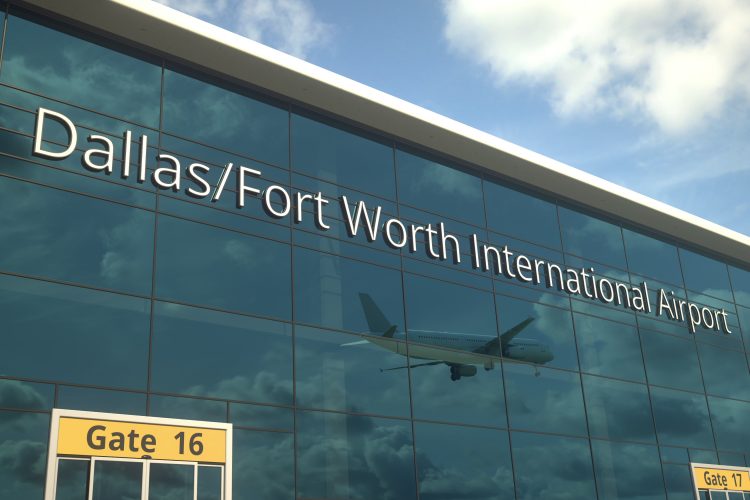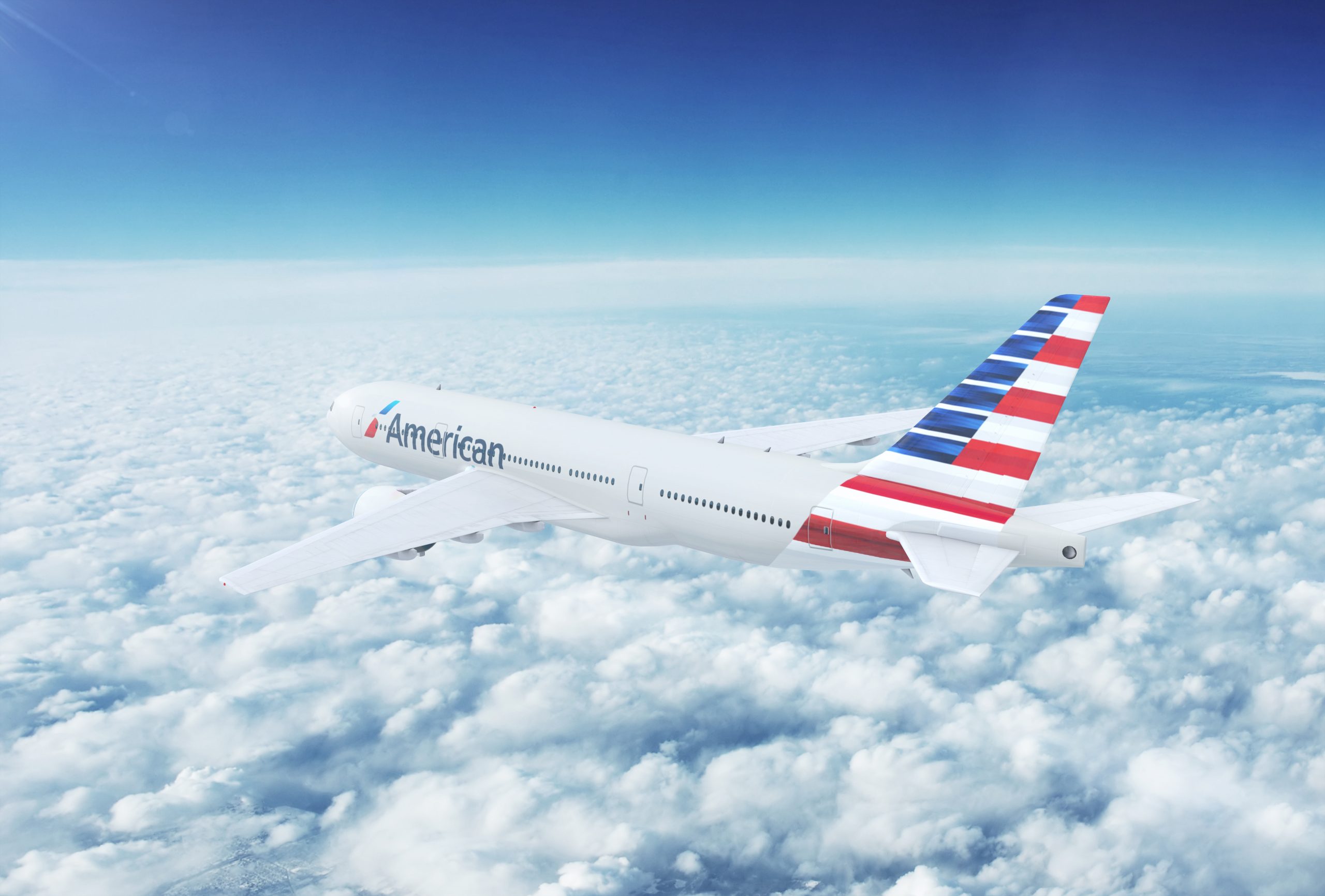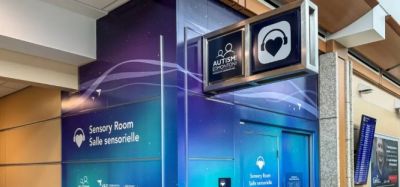Dallas Fort Worth: Not just cowboy hats and oil
- Like
- Digg
- Del
- Tumblr
- VKontakte
- Buffer
- Love This
- Odnoklassniki
- Meneame
- Blogger
- Amazon
- Yahoo Mail
- Gmail
- AOL
- Newsvine
- HackerNews
- Evernote
- MySpace
- Mail.ru
- Viadeo
- Line
- Comments
- Yummly
- SMS
- Viber
- Telegram
- Subscribe
- Skype
- Facebook Messenger
- Kakao
- LiveJournal
- Yammer
- Edgar
- Fintel
- Mix
- Instapaper
- Copy Link
Posted: 3 February 2022 | Holly Miles | No comments yet
At the World Routes 2021 Conference in Milan, International Airport Review Editor, Holly Miles, caught up with John Ackerman, Executive Vice President – Global Strategy and Development at Dallas Fort Worth International Airport, to discuss how the airport has fared during the pandemic, their survival strategy, and how they have enabled a safe passenger experience, future trends, route development, and sustainability.


Speaking about the effect that the COVID-19 pandemic has had on Dallas Fort Worth International Airport’s (DFW) passenger numbers, Ackerman said that passenger numbers were down over 90 per cent in April 2020. “We made some early decisions and I think we acted quicker than most airports. We have a veteran management team. Most of us came from airlines. So, ironically at the time, we looked at it and said, ‘it looks kind of like 9/11’. I mean, you’d never seen, just a flick of a switch, and traffic go down. We started thinking about some decisions we had to make as airline executives back then. We immediately started reducing spending. Anything that wasn’t necessary to keep airlines flying and keep our airport operating, we stopped doing very quickly. In about a week, we slashed about 30 per cent of our budget for the rest of the year, and it was tough. It was tough for everybody. You get excited to do things, and when you can’t do things, it’s not as fun, but we knew we had to do that, to make sure we could come out the other end. You can choose to make smaller corrections earlier on, or you can wait and then have to make bigger corrections later, and we chose the former and that benefitted us.”
Government aid and airline strategy
During the pandemic, American Airlines made the decision to restructure their entire network and therefore to concentrate most of their traffic over DFW airport and Charlotte Airport in North Carolina. “That benefitted us tremendously, and we saw traffic come back quicker than most other airports as well. For a good part of 2020, we were the busiest airport in the world, which had never happened to us before, but with the rest of the world’s airports down I think we fared better.”
As part of the Coronavirus Aid, Relief, and Economic Security (CARES) Act, the U.S government awarded $10 billion in economic relief to U.S airports, and DFW was a beneficiary of this relief.
The air that you’re breathing in our terminals now is as sterile as we can make it”
This played a role in DFW’s success: “Because of the strength of our balance sheet and the government assistance we received, we were able to defer charges for airlines for most of the year because we knew they were suffering. We were also able to treat our concessionaires, who operate our restaurants and retail the same way and waive their rent to keep them going. We did it for two reasons. One is a spirit of partnership. When I’m strong and you’re weak, I should help you. And, if the situation were to be reversed, I would hope you would help me. We thought it was the right thing to do as a long-term business relationship. Secondly, we also knew that we would eventually get through this, and we needed partners on the other end, we needed airlines, restaurants, and retail. So, when our customers came back, we needed to be ready for them, and that meant making sure everybody survived to come out the other side. This is what we did, and I think it paid off well, because we’ve had the strongest recovery virtually in the airport world. We are one of the only airports in the world to actually have one more destination today than we did before the pandemic.”
Rebuilding passenger confidence
Ackerman said that, like all airports, they moved quickly to put up plexiglass barriers and deploy more cleaning measures.
“What we quickly realised is that cleaning and sanitising are really two different things and we’re not experts in either.”
The airport’s Customer Experience team led DFW’s establishment as a GBAC (Global Biorisk Advisory Council) certified airport. They were the first airport in the world to get GBAC STAR certified.
“We wanted to get an independent standard that would help us communicate to our passengers that we were doing everything we could, with independent validation. So, our customers didn’t just have to take our word for it. They could look at this independent certification.”
We’ve had to re-study our customers and almost get to know our customers again”
DFW has also just completed the installation of UVC technology so now all their passenger terminals are 100 per cent UVC protected, said Ackerman. “The air that you’re breathing in our terminals now is as sterile as we can make it.”
DFW had already started working towards a touchless and contactless passenger experience but accelerated those efforts with their innovation team during the pandemic.
They had also started their journey to biometric boarding and Ackerman described how he had in fact used the biometric gate himself to board his flight to Milan. “You don’t have to come within six feet or two metres of an agent, but it’s also faster. It’s good for the COVID-19 protocols, but we were already working on it because it’s a much more secure way to do boarding, and it’s actually faster for the airline.”
Future obstacles
Ackerman said that they are eager to recover their full flight network as they foresee their domestic market coming back to 2019 levels in 2022 and probably even exceeding these levels.
For DFW, Mexico – which shares a border with Texas – is their biggest international market.
“Mexico not only held up well, but our Mexican network has actually become better. We want to make sure we keep our Mexico network strong, that’s very important to us.”
International long-haul is DFW’s biggest concern from a network perspective. The business travel market is not back to the levels that airlines need them to be. “For the airlines, a lot of the profitability of that flight is in the front cabin. So, we’re concerned about that market segment.”
Passenger and macro trends
Ackerman said that there are a few trends that they have seen in 2021, which they think will continue in 2022. Firstly, there has been a blurring of business and leisure travellers. There used to be a very stark difference between business and leisure travel, and now some of those patterns have begun to blur according to Ackerman. “In the past, our car parking garages were always empty on weekends and full during the week, because the business travellers are the ones who are willing to pay for that. Leisure travellers prefer to use surface lots or remote parking. However, we’ve now seen that turned on its head. Our garages are now full on the weekends, and they’re empty during the week because of the difference.”
As a result of this, DFW has had to rebuild its customer segmentation. “We’ve had to re-study our customers and almost get to know our customers again. That is a trend and we’re not sure where that’s going yet. We’re watching the leisure/business trend closely.”
They also believe that the summer of 2022 is going to be busy in Europe as we see what happened in the U.S. with their boom in domestic travel, repeat itself in Europe. Americans could not fly anywhere internationally, so instead they travelled extensively within the U.S.
“Our domestic summer was actually quite robust in many ways. We saw a lot of pent-up demand to Europe where people have almost two years’ worth of European travels saved up. We think that Europe is going to be very, very strong.”
In terms of macro trends, Ackerman believes that mobile use during the pandemic has increased and is here to stay and will in fact accelerate. “Everyone nowadays carries a mobile device and more can be done with NFC and with biometrics.”


European route development
DFW worked very hard to develop its European routes and to serve those markets, but they think there is still room to grow in Europe with Barcelona as their main target, being their largest unserved European market. “We have long eyed Barcelona, and we think there’s room for us in Europe. Latin and South America is also a big region. It’s one of American Airlines’ strongest region. It’s very important to us, and we think there’s quite a bit of room to grow our network in South and in Central America as well. So, those are two areas we’re focused on.”
Putting DFW on the map
We have a world-class airport that has outstanding facilities for the airlines. That’s important and we believe we have that. The other thing that we have that nobody in the world has, is the DFW Metro area. We’re the fourth largest metropolitan area in the United States right now and the fastest growing. And the U.S. is still the world’s biggest aviation market, the richest aviation market and consequently still very attractive to a lot of airlines”
In their talks with airlines, airports need to demonstrate that their tourism markets are there and ready to go, but they also need to demonstrate that their airport can receive the passengers, rather than their neighbouring competition. To this, Ackerman said: “We have a world-class airport that has outstanding facilities for the airlines. That’s important and we believe we have that. The other thing that we have that nobody in the world has, is the DFW Metro area. We’re the fourth largest metropolitan area in the United States right now and the fastest growing. And the U.S. is still the world’s biggest aviation market, the richest aviation market and consequently still very attractive to a lot of airlines.”
DFW is on track to surpass Chicago as the third largest city in the U.S. This is a huge selling point for the airport as opening new routes is a long-term investment for airlines. “Route development takes time, especially internationally, and the longer the route, the longer it takes to mature. These are multi-year investments that airlines are making. If you are an airline making an investment that’s going to last for several years, you ought to be looking to the future to see where you want to be. In hockey, you skate where the puck is going. You don’t skate where the puck is.”A strong and diversified economy is also important. “We’re the most diversified economy in the United States, out of all the major metropolitan areas. We have the most industry diversity of anybody, and that usually surprises people. When they think of Texas, they think of cowboys and oil. However, the DFW economy is not dependent on the energy sector at all. As a matter of fact, that’s one of our smaller sectors. It’s a very diversified economy and we have data to prove it.”
Special projects
When asked what exciting developments are currently happening at the airport, Ackerman regaled me with a story of the replacement of one of their gates.
DFW is rebuilding four gates for Terminal C. The gates were built more than 20 years ago, and they were supposed to be temporary. The gates were torn down, but, at the same time, they were simultaneously building the new gates in modular form in another area of the airport.
Each gate is built in four modules with the lightest module weighing around 450 tons and measuring 20m x 25m. The gates were built outside the airport boundary where it’s less expensive because you do not have security considerations for the staff working on the project.
We’re the most diversified economy in the United States, out of all the major metropolitan areas. We have the most industry diversity of anybody, and that usually surprises people. When they think of Texas, they think of cowboys and oil. However, the DFW economy is not dependent on the energy sector at all. As a matter of fact, that’s one of our smaller sectors. It’s a very diversified economy and we have data to prove it.”
Once the gates were ready, the modules were transported on wheels at night across the airport and two active runways, which they shut down during crossing. However, the modules had to pass underneath an elevated train track that connects the terminals. So, the modules had to be lowered to go underneath the track and then raised again. They calculated that it could be done with just seven inches of clearance under the track. Ackerman described the nail-biting moment as he watched the modules navigating their way under the track with only seven inches to spare – an amazing feat of engineering. And it is something they will be continuing with.
“With that modular construction we reduced the construction time by about 30 per cent. We now have airports around the world that are coming to DFW to see how we did it. There are a few hotels at the airport, and we found out recently that a construction company secretly rented a few rooms at one of the hotels so they could watch what we were doing because they wanted to copy it. We’re flattered by the attention,” Ackerman said, laughing.
“We have found a way to reduce construction cost in time by 25 to 30 per cent and we’ve got a lot more to build. We’ve already announced that we a rebuilding two new piers that are going to have a total of nine new gates between the two of them. We’ve announced that we’re going to build those off-site. Simply, we’re not going back to the old way because this way’s cheaper, faster, safer, and more secure.”
Sustainability
Talking about the future, Ackerman recognises the need for airports to become more sustainable and he says that despite Texas being synonymous with oil, DFW is the largest carbon neutral airport in the world, which may come as a surprise to many.
“The aviation industry is responsible for a significant percentage of the world’s carbon emissions, and we know that has to change, and it’s changing in Europe first. We were also the first carbon-neutral airport in North America, and we announced just a few months ago that by 2030 we’ll be net zero. We get 100 per cent of our electricity from wind power. Again, that’s the kind of thing that most people wouldn’t associate with Texas. We are out there as thought leaders, and leaders in all aspects of sustainability. We believe the industry needs to focus on this, because if we want to continue to enjoy travel, like we all do, we must figure out a way to do it more sustainably.”
Business outlook for 2022
By next summer, it will have been more than two years since most people in the world have been able to travel unimpeded. If they can travel freely then Ackerman believes it will be a watershed moment for global air travel: “I really think the aviation industry is going to do well in 2022, if vaccines continue and if the regulatory bodies, the state governments, can enforce reasonable restrictions that are easy to understand and as consistent as possible. I think people will absolutely travel.”


Related topics
Airport construction and design, Airport development, Contactless / Touchless technology, COVID-19, Parking, Passenger experience and seamless travel, Route development, Social responsibility, Sustainability, Sustainable development
Related airports
Charlotte Douglas International Airport (CLT), Dallas Fort Worth International Airport (DFW)


















